Legend of Grimrock
Almost Human, 2012
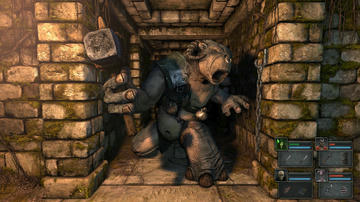
Legend of Grimrock reboots the first-person dungeon crawler in spectacular fashion. Using ancient design mechanics from its grid-based forebears such as Dungeon Master and Eye of the Beholder, is there a place for it in contemporary gaming?
In the late 1980s and early 1990s, my gaming was mostly focused around dungeon-crawlers. The amazing Dungeon Master had come out in ’88, and was soon followed by imitators: Eye of the Beholder, Black Crypt, Captive, Hired Guns. I played them all and loved them.
Nearly 25 years later a small team of Finnish developers have taken a risk on rebooting those games. Legend of Grimrock takes everything that made those games fun and brings them right up to date in a true 3D environment.
Grimrock started as a small side-project for developer Petri Hakkinen. At the turn of the century he made a small demo of a game that he called Dungeon Master 2000. By 2004 it had become Escape from Dragon Mountain and a three level prototype was released. It would take another seven years for Petri to raise funds to bring his dream to life: reboot the classic dungeon crawler in modern fashion.
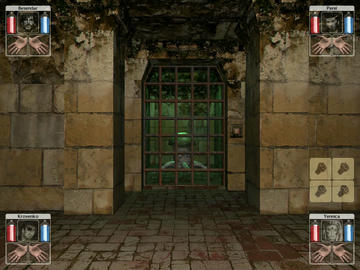
Story and setting
Grimrock starts with a short introduction of static screens and some epic music, a low-budget necessity for a self-funded indie game. But despite the lo-fi approach, it’s atmospheric and sets an appropriate tone.
Mount Grimrock is a dungeon where sinners go to die. Four prisoners have been committed to its depths for treason against the King. Alighting from the airship that brought them here, a great pit opens before them and into it they are cast. If they can survive the horrors of what they find inside, they will be pardoned and free once again. It’s a pretty thin premise, but it’s just enough to give a sense of purpose to the adventure that follows.
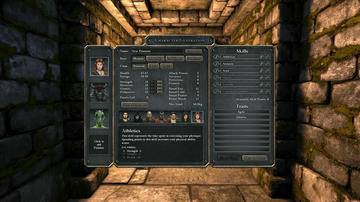
Character Creation
All the games that influenced Grimrock started with party selection, and Grimrock follows suit. You can choose a quick-start party or customise your characters. You can allocate a pool of points to their basic statistics, choose their skills and assign traits. Select a race (human, minotaur, insect or lizard) and name each one. Each race has inherent talents, so it’s wise to spend some time working out a balanced party. Typically two fighters front your party with close-range weapons, while the two at the back focus on ranged weapons and magic.
The character creation screen has plenty of information to help guide you in your customisations. It won’t offer any insights into a balanced party however, so you should take care in the skills and traits you assign as they determine how your characters will grow.
Gameplay
As with those 80s dungeon crawlers, Grimrock’s world is set out on a grid. You move from tile to tile one at a time, using the standard WASD keys. The mouse is used for all other functions, by interacting with the world and your characters.
Each of your characters is represented in the bottom right of the screen, and from here you can attack enemies and cast spells. Clicking an avatar brings up the inventory for each character, where you can manage their stash of items, view their stats and handle character development.
If you’ve played any of the old-school games on which Grimrock is based, you’ll be instantly familiar with this interface. While it does feel a bit weird going back to a grid-based game after all these years, it doesn’t take long for it to become familiar again.
Combat and Magic
Close combat is handled by equipping a weapon in a character’s hand, then right-clicking on it to attack. Swords, axes and hammers only affect creatures on the tile in front. Thrown weapons such as knives will travel further depending on your skill levels, and will help keep you out of trouble.
Magic is very similar to the original Dungeon Master. Your magic users have a rune-panel in place of a weapon. Right clicking their hand (or magical object) brings up the panel, where you string together a spell by selecting different runes. Scrolls can be found with rune combinations (just as in Dungeon Master), but you can also experiment to find new spells. You can’t cast spells if you’re not skilled enough, however, so many of them won’t be available to you until later in the game.
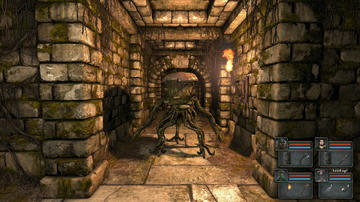
One of the original exploits of combat in the old games was known as ‘kiting’ or the ‘two step cheese’. What cheese has got to do with medieval combat I’ve no idea, but the basic concept is to attract a creature towards you then continually sidestep into the next square. If you turn at the right moment, you can attack their flank safely before stepping away. Grimrock’s AI is smarter than those old games, but still not smart enough, so cheesing your enemies like this still seems to work pretty well.
There’s nothing particularly original about the combat or magic in Grimrock, but what’s there is remarkably well polished. If you’re unfamiliar with old grid-based games, it’ll likely feel slow and cumbersome. But for those who were there the first time around, it feels natural and works exactly how you would expect.
Level Progression
Performing combat and magic increases your experience, and periodically all your team will level up. As your experience increases, you gain extra points that you can pump into the skills you chose during character creation. Some of these skills need to be a certain level for you to open up your character’s capabilities.
For example, to be able to cast more dangerous spells, you need to add points to your Fire Magic or Earth Magic skills. Or to wear heavier armour, you need to increases your Amors skill. This customisation allows your great flexibility in how to develop your team.
Mapping
Do you remember getting lost in the labyrinths of Dungeon Master? A rite of passage for all of us was making maps with pencils on graph paper. Thankfully Grimrock helps us out by providing an automap. And it’s really necessary: I don’t have the time to map games any more, and a map is essential for understanding how all the winding mazes fit together.
You can also disable the map when you start the game. This modes gives you the additional challenge of needing to navigate from memory, or by drawing your own maps. I can’t imagine anyone of my advanced years having the time to do that, but young RPG enthusiasts might take some delight from it.
Graphics and sound
When I saw the first few screenshots of Grimrock during development, I think I actually salivated. The visuals were absolutely stunning. The team at Almost Human were clearly crafting something of beauty. With many years of collective game development between them, they knew exactly the look they wanted.
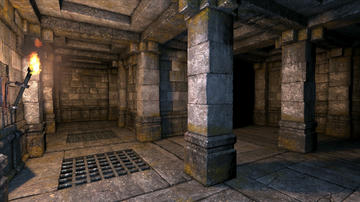
Once I fired the game up for the first time, I was honestly blown away. This thing positively oozed charm. Despite the grid-based topography giving the gameplay a dated feel, the aesthetic is bang up to date and it looks amazing. Flickering torchlight casts a warm glow in the stone cold dungeons. Dynamic lighting casts spooky shadows. Spells glow, fizzle and explode with just the right amount of eye candy. And creatures pursue you relentlessly with convincing animations.
The sound is also very good and sets an appropriate tone, with musical ambience whispering through the dusty halls. Combat sound effects work well and all the other effects you’d expect are more than competent. This dungeon sounds alive and completely convincing.
Summary
Although Grimrock is based on ancient game mechanics, it somehow manages to bring them up-to-date. The gameplay may not appeal to the younger generation, but anyone who played those early dungeon crawlers should feel right at home.
Perhaps I’m just misty-eyed with nostalgia, but I do think Almost Human have crafted a brilliant new game. It looks great, sounds great and plays with just enough balance between old and new mechanics to feel fresh, while being firmly rooted in the foundations of its forebears. I enjoyed it so much I completed it in just a few evenings, which at my age is a minor miracle. Highly recommended for old-school dungeon dwelling nerds.